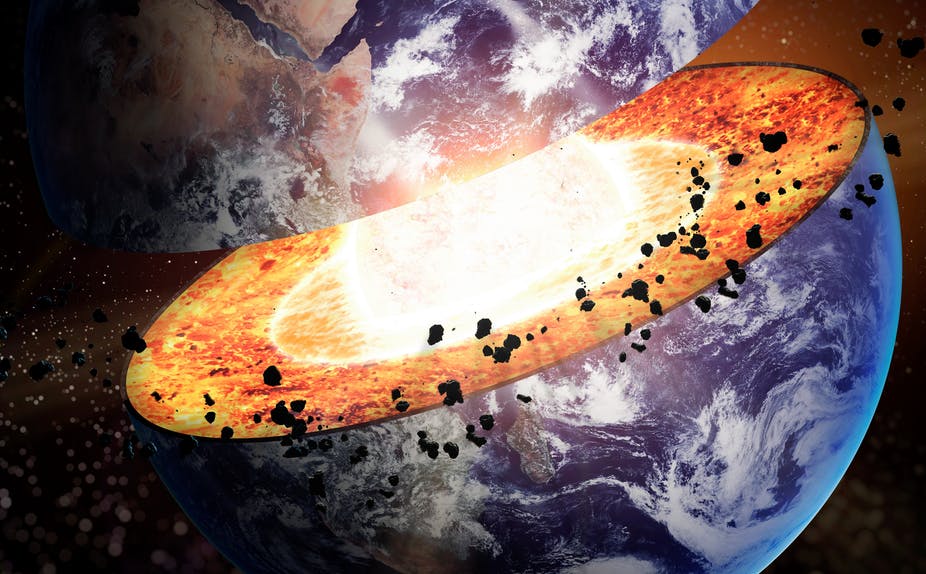Earth’s Core is a Billion Years Old
The sturdy inner core of Earth is only a mere billion years old, new research suggests. Modern earth is like a layer of biodiverse cake, with a substantial outer crust, a hot, viscous mantle, a liquid outer core, and a solid inner core. That solid inner core is growing slowly as the liquid iron in the core drops in temperature and crystallizes. This process supports this power churning motion of the liquid outer core, which in turn generates the magnetic field that surrounds Earth and helps protect out planet from stark cosmic radiation that would kill most life, at the wrong levels.
As you can imagine, the inner core is fairly important.
But not much is understood about the history of this 1,500-mile-wide or 2,442-kilometre iron ball. Estimates of its age have ranged from half a billion years to more than 4 billion years, almost as old as 4.5-billion-year-old Earth itself. Now, scientists have squashed a tiny piece of iron between two diamonds and blasted it with lasers to arrive at a new estimate of 1 billion to 1.3 billion years old. A date range that correlates with a measurable strengthening of the Earth’s magnetic field that happened around the same time.
The Geodynamo
Earth’s magnetic field is powered by what scientists call the “geodynamo”. That is the movement of the iron-rich outer core, which turns the planet into a giant, if somewhat messy, magnet. The geodynamo is responsible for Earth’s North Pole and South Pole and the invisible shield of magnetism that deflects, and traps charged particles flowing from the sun. These particles would otherwise slowly rip Earth’s atmosphere to bits.
Part of the movement of the inner core is powered by heat, known as its thermal energy source. As Earth’s core cools over time, it crystallizes from the inside out. This crystallization process releases energy that can further power the movement of the still-liquid outer core. This energy release from crystallization is called the compositional energy source of the geodynamo, scientists have reported.
Scientists have wanted to use experimental evidence to pin down the energy from each of these sources. Knowing the amount of energy would allow them to approximate the age of the inner core. To achieve this, the researchers recreated the conditions of the core on a smaller scale. They heated a piece of iron which was 6 microns thick (about the same as the length of a red blood cell) to temperatures up to 4,940 degrees Fahrenheit (2,727 degrees Celsius), and squashed the ample between two diamonds to match the intense pressures at Earth’s core. They then measured the conductivity of the iron under these conditions.
A Young Core
This conductivity measurement enabled scientists to figure out the thermal cooling of the core that is available to power the geodynamo. They found that the geodynamo drew around 10 terawatts of energy from the cooling core. That is just over a fifth of the amount of heat the earth dissipates into space from its surface which is around 46 terawatts.
Once they calculate the amount of energy loss, the researchers could calculate the age of the Earth’s inner core, scientists have suggested. Knowing the rate of energy loss enabled the scientists to figure out how long it would take to get a solid mass the size of today’s core from a blog of molten iron. This is how they figured out that the Earth’s core is only 1 billion to 1.3 billion years old.
To conclude, better understanding our planets age puts our cosmic timeline better context for other related scientific discovers. It can help us to understand the evolutionary development of life on our planet and perhaps one day predict how life might change in the future based off the signs left from the past.

